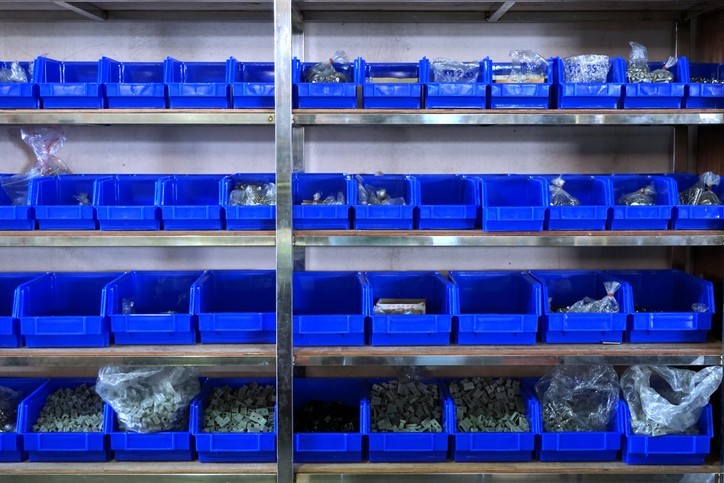Become an Expert in Inventory Management within Manufacturing Software
What Is Inventory Management?
Inventory management is a process that identifies the inventory that is needed and how much is required to fulfill current and forecasted demands. Therefore, this is a crucial process because too much inventory ties up cash and too little inventory can result in shortages and negative customer satisfaction.
Furthermore, every business strives for a balance that minimizes the cost of inventory on balance sheets whilst meeting order demand and delivery expectations simultaneously.
What Is Inventory?
The term inventory refers to the raw materials used in production and the materials being converted into finished goods (work-in-progress (WIP)). In addition, finished goods are a special type of inventory because they are available for immediate sale.
Furthermore, some businesses may include other items such as packing materials, maintenance, repair, and operations (MRO) as inventory.
Likewise, holding inventory at zero value is an option, especially on items when the quantity is important. An example of this is consignment or customer-owned material.
Additionally, a company’s inventory represents one of its most significant assets. Consumption of this asset represents the primary source of revenue generation and subsequent earnings for the company’s shareholders.
Accountants represent inventory as a current asset in financial statements. Specifically, the balance sheet. Some accountants split current assets between finished goods, raw materials, and work in progress. Finished goods have a shorter time to convert into revenue. At the same time, WIP and raw materials have longer paths to take before generating revenue.
Benefits of Inventory Management
Fulfillment of Orders:
Having the right inventory, in the right amount, at the right time has many benefits, including the fulfillment of orders.
Saves Money:
Knowing what inventory is available and how much there is prevents unnecessary purchases. Reducing unnecessary purchases reduces inventory costs and the amount of unused, obsolete, and excess stock.
Improves Cash Flow:
Managing inventory properly means spending money on inventory that leads to revenue, resulting in a constant circular flow of cash between accounts payables and receivables.
Customer Satisfaction:
An effective inventory management system delivers products on time and in the amount desired by customers, increasing customer satisfaction.
Inventory Management Methods and Terms
Depending on the type of business or product being analyzed, a company will use various inventory management methods. Some of these management methods include materials requirements planning (MRP), just-in-time (JIT) manufacturing, and First-In, First-Out (FIFO). These are the three most common methods used to analyze inventory.
In addition, analysis by item classification and frequent auditing is also popular. All methods aim to improve accuracy. The techniques a company uses depend on its needs and inventory.
SimpleManufacturing™ includes industry-accepted techniques and best practices such as:
Materials Requirements Planning (MRP):
Material Requirements Planning forecasts material demand based on Outstanding Orders, Current Inventory from all types – Raw Material, WIP, and Finished Goods. Furthermore, it includes the expectation of deliveries from Outstanding Supplier Purchase Orders and Forecasted Work Orders. This complex function results in an easy-to-read report displaying what existing inventory will be consumed, when it’s consumed, the additional material required, how much is needed, and when it is necessary.
JIT (Just In-Time Inventory):
Having the right amount of inventory, at the right time, is a byproduct of having accurate inventory and utilizing the Materials Requirements Planning (MRP) process.
FIFO (First-In, First Out):
First-In, First-Out (FIFO) approach consumes inventory in the chronological order it was received. This is especially important for perishable items, like glues, solder paste, flux, etc. It’s also a good idea for nonperishable goods since items sitting around for too long might become damaged, otherwise out of date and unsellable based on Lot or Date Code obsolescence, etc..
Stagnant / Excess Inventory:
Identifying low-turn inventory or inventory without demand allows businesses to consider discount sale prices or selling the excess to brokers.
ABC Analysis:
SimpleManufacturing™ has the option of classifying each item using the common ABC approach. Items classified as A are big-ticket items or most critical, and usually make up the smallest percentage of inventory and have the largest annual consumption value. Items grouped into the C category are the least expensive or least critical items, make up the largest percentage of inventory, and have the lowest annual consumption value. As a result, tracking higher-value inventory items becomes easier to manage.
Cycle Counting:
Auditing Stock Levels using the SimpleManufacturing™ cycle count process is simple and effective. Completing a cycle count on a few items frequently minimizes the employee labor burden to complete and increases accuracy. Additionally, the ABC Analysis approach can schedule cycle counting more frequently on A-classified items, ensuring that the most expensive or critical items’ inventory balances remain accurate.

